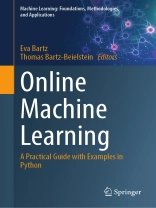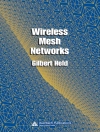This book deals with the exciting, seminal topic of Online Machine Learning (OML). The content is divided into three parts: the first part looks in detail at the theoretical foundations of OML, comparing it to Batch Machine Learning (BML) and discussing what criteria should be developed for a meaningful comparison. The second part provides practical considerations, and the third part substantiates them with concrete practical applications.
The book is equally suitable as a reference manual for experts dealing with OML, as a textbook for beginners who want to deal with OML, and as a scientific publication for scientists dealing with OML since it reflects the latest state of research. But it can also serve as quasi OML consulting since decision-makers and practitioners can use the explanations to tailor OML to their needs and use it for their application and ask whether the benefits of OML might outweigh the costs.
OML will soon become practical; it is worthwhile to get involved with it now. This book already presents some tools that will facilitate the practice of OML in the future. A promising breakthrough is expected because practice shows that due to the large amounts of data that accumulate, the previous BML is no longer sufficient. OML is the solution to evaluate and process data streams in real-time and deliver results that are relevant for practice.
In addition to this book, interactive Jupyter Notebooks and further material about OML are provided in the Git Hub repository (https://github.com/sn-code-inside/online-machine-learning). The repository is continuously maintained, so the notebooks may change over time.
Table of Content
Chapter 1:Introduction.- Chapter 2:Supervised Learning.- Chapter 3:Drift Detection and Handling.- Chapter 4:Initial Selection and Subsequent Updating of OML Models.- Chapter 5:Evaluation and Performance Measurement.- Chapter 6:Special Requirements for OML Methods.- Chapter 7:Practical Applications of Online Machine Learning.- Chapter 8:Open-Source-Software for Online Machine Learning.- Chapter 9:An Experimental Comparison of Batch and Online Machine Learning Algorithms.- Chapter 10:Hyperparameter Tuning.- Chapter 11:Summary and Outlook.
About the author
Prof. Dr. Thomas Bartz-Beielstein is an artificial intelligence expert with 30+ years of experience. He is a professor of applied mathematics at TH Köln in Germany and the director of the Institute for Data Science, Engineering, and Analytics (IDE+A). His research lies in artificial intelligence, machine learning, simulation, and optimization. He developed the Sequential Parameter Optimization (SPO). SPO integrates approaches from surrogate model-based optimization and evolutionary computing. He has worked on diverse topics from applied mathematics and statistics, design of experiments, simulation-based optimization and applications in domains as water industry, elevator control, or mechanical engineering.
Eva Bartz is an expert in law and data protection. Within the wide area of data protection, she specializes particularly in the application of artificial intelligence and its benefits and dangers. Based on this vast experience, she founded Bartz & Bartz Gmb H in 2014 together with Thomas Bartz-Beielstein and offers consulting for a variety of customers. She translates the academic expertise of Bartz & Bartz Gmb H’s advisors – who are leading experts in their fields – into a benefit for her customers. One of these customers was the Federal Statistical Office of Germany (Destatis), and the study for them laid the groundwork for this book.












